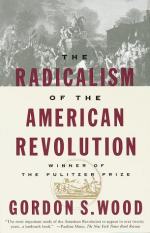
|
| Name: _________________________ | Period: ___________________ |
This test consists of 15 multiple choice questions and 5 short answer questions.
Multiple Choice Questions
1. Whose Massachusetts family had done missionary work among the Indians?
(a) Lord Chesterfield.
(b) William Livingston.
(c) Joseph Addison.
(d) Jonathan Mayhew.
2. Who wrote "The Religion of Nature Delineated"?
(a) Thomas Jefferson.
(b) Thomas Paine.
(c) Lord Chesterfield.
(d) William Wollaston.
3. What form of address came into general use in the late 18th century?
(a) Goodman.
(b) Mr.
(c) Sir.
(d) Freeman.
4. Who had an international reputation as a hero in the 1780s?
(a) George Washington.
(b) John Adams.
(c) Ben Franklin.
(d) Thomas Jefferson.
5. What eventually became the sole criterion for the political worth of a person?
(a) Loyalty to the administration.
(b) Loyalty to the people.
(c) Loyalty to the party.
(d) Loyalty to the state.
6. What year was the Continental Congress?
(a) 1775.
(b) 1772.
(c) 1774.
(d) 1773.
7. Who said he didn't know how to keep America from "sliding down into the mire of democracy"?
(a) George Cabot.
(b) Oliver Wolcott.
(c) Fisher Ames.
(d) James Kent.
8. Who said about Americans that their "universal roar is Commerce"?
(a) Samuel Mitchill.
(b) Philip Freneau.
(c) Oliver Evans.
(d) William Crafts.
9. What contributed to America's economic troubles in the 1780s?
(a) The withdrawal of loyalist's monies.
(b) The end of the war.
(c) The establishment of a new government.
(d) The absence of manufacturing.
10. Who said, "We see with other eyes; we hear with other ears"?
(a) Thomas Paine.
(b) Thomas Jefferson.
(c) John Adams.
(d) Lord Chesterfield.
11. When did Americans begin to call for the boycotting of British goods?
(a) When Mechanics Hall became a meeting place.
(b) When the Patriotic Society was formed.
(c) When the Stamp Act was issued.
(d) When artisans in Philadelphia won four city offices.
12. How many loyalists left the colonies during the revolution?
(a) 60,000.
(b) 70,000.
(c) 90,000.
(d) 80,000.
13. How many American whiskey distilleries were there in 1830?
(a) 15,000.
(b) 25,000.
(c) 20,000.
(d) 10,000.
14. What was democracy considered in the 18th century?
(a) An impossible accomplishment to be dismissed.
(b) A technical term of political theory.
(c) A utopian term or society's hope.
(d) A present condition of American life.
15. Who believed progress and social harmony would result from the enlightened conclusion of the new American society?
(a) Robert Munsford.
(b) John Quincy Adams.
(c) James Allen.
(d) Jeremy Belknap.
Short Answer Questions
1. What was the main source of instability and anxiety in revolutionary America?
2. In the late 18th century, what replaced whipping and execution as penal codes?
3. Who said America was "just emerging from the rude unpolished condition of an infant country"?
4. Who said, "All Christendom has been decomposed, broken in pieces" in this "fiery furnace of democracy"?
5. What did the revolutionaries mean when they said they supported equality?
|
This section contains 425 words (approx. 2 pages at 300 words per page) |

|




